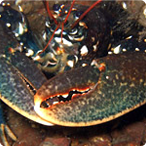
Sweep Project
STUDY OF THE WASH EMBAYMENT ENVIRONMENT AND PRODUCTIVITY (SWEEP)
INTRODUCTION TO THE SWEEP PROJECT
The Wash represents one of the premier coastal marine ecological sites in the United Kingdom. The area is of key socioeconomic and environmental importance, as demonstrated by the international and national conservation designations placed upon it. There is also a long hisotry of nationally important fisheries within The Wash expoliting cockle, mussel, shrimp, lobster, crab and various fish stocks. Not only does the area harbour an important shellfish industry but it also acts as nursery groudn for juvenile fish and its extensive wetland habitat supports significant populations of many bird species. Thus, it is important to monitor and indeed manage The Wash from several different perspectives in a sensitive and efficiant manner.
The Eastern IFCA (previously ESFJC) begun a project with Natural England and the assistance of Cefas to investigate premary productivity and nutrient trends throughout The Wash. This work arose in response to concerns that food limitations and competition may have played a role in recent cockle mortalities occurring on specific sands. Additionally, this affords the opportunity to begin a long-term water quality-monitoring initiative, contributing to the formation of a valuable historic dataset.
Ultimately, it is envisaged that the work will aid in the understanding and monitoring of the ecological status of The Wash, the carrying capacity for shellfish stocks, and will provide insights into the implications for the wider ecosystem. Recent work carried out in Northern Ireland (Sustainable Mariculature in norther Irish Lough Ecosystems or SMILE) identified similar targets for a number of sea-loughs, providing a framework to which this project will aspire. It is clear that there is a significant opportunity for a number of organisations to collaborate and mutually benefit from such a project, either as part of routine monitoring requirements or through original research.
WORKSHOP SUMMARY
The ESFJC proposed a one-day workshop on the 7th September 2009 to promote the work that we cnduct and the potential for collaborations with interested parties (see workshop agenda). The main topic areas addressed by the project (within the context of The Wash) and discussed at the workshop were:
-
Water movements and hydrodynamic controls – potential modelling studentship
-
Nutrient inputs and primary productivity – monitoring work
-
Factors influencing the carrying capacity of shellfish stocks – biological controls
-
Impacts of environmental variations – phenological changes and implications
-
Changes in ecosystem structure and functioning – habitat and species variations
The project has already identified a number of collaborative links, specifically with Natural England, Cefas, the University of East Anglia (UEA) and the Environment Agency and representatives from each attended the workshop. The workshop provided a valuable opportunity for many different agencies and organisations to discuss current monitoring work and research in The Wash. During the workshop we heard about the Burry Inlet cockle mortalities and the ongoing work being carried out by the Environment Agency to address the situation. Given the scale and complexity of the Wash ecosystem it is currently impractical to tackle all of the factors that may be contributing to the success of the bivalve stocks. However, we have begun to address some key factors such as food availability and competition through the use of new monitoring techniques and existing data. The workshop helped to identify clear links between the work conducted by the Environment Agency, Cefas and the ESFJC. It is hoped that we will encourage further investments in this valuable environment to continue to build on our current knowledge base.
